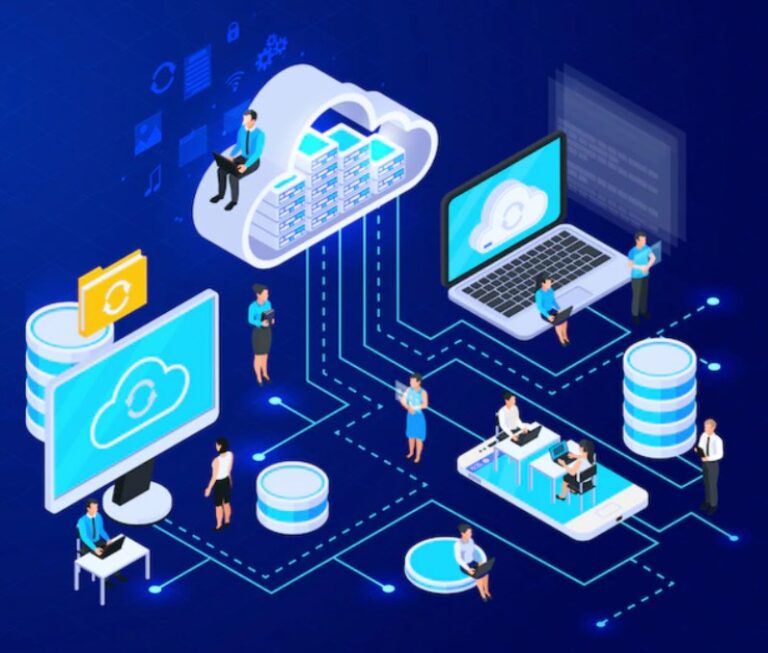Develop Digital-First Culture | Edge Computing Applications
A technology-first mindset change is happening. Digital leaders want to grow worldwide with flexibility, surge forward, and provide new world-class user experiences while doubling digital output. Making the transfer to the cloud is not only a technological or operational problem but also a huge culture shift that begins at the top, with the computers and systems accountable for assuring the success of the transformation.

Digital-First Culture#
Developing a digital-first culture entails more than just using cutting-edge technologies. Create an agile company where technologies and business culture collaborate to optimize processes, maximize efficiency, and provide an outstanding customer experience (Merkt, Lang, and Schmidt, 2021). To do this, corporate leaders must first work on instilling a digital-first attitude in their employees, ensuring that they are digitally literate and comfortable adjusting to new technology.
Need to Adopt a Digital-First Culture#
Business leaders cannot afford to overlook the importance of culture. It is critical to comprehend the magnitude of the digital transformation's core strategic paradigm change. Culture is the collection of attitudes and behaviors that define how things are done in a company (Tuukkanen, Wolgsjö, and Rusu, 2022).
A digitalization-friendly culture possesses the following characteristics:
- Encourages an external rather than an internal orientation.
- Delegation takes precedence over control.
- Emphasizes daring rather than prudence.
- Focuses on action rather than preparation.
- Prefers teamwork over solo effort.
Benefits of a Digital-First Culture#
A digital-first culture can assist the leader in future-proofing the organization and emerging as a leader who establishes new industry norms and standards. At the very least, it will assist the company in being fluid and responsive to market and socioeconomic conditions (Ghosh et al., 2021). Among the more precise benefits of engaging in a digital-first workplace are:
- Reducing team silos and increasing openness.
- Increasing overall agility and adaptability.
- Enhancing data collection.
Strategies for Creating a Digital-First Culture#
Concentrate on the People: Since people are typically resistant to change, introducing new technology without adequate support will not produce the expected outcomes. Furthermore, some people are concerned that automation and technology will eliminate their jobs. To effectively develop a digital-first culture, address these concerns as soon as feasible.
Begin at the Top: Senior management has the key to developing a business culture. Leaders must advocate the strategy in everything they do while attempting to develop a digital-first culture. Set a good example.
Embrace Technology: Digitization reduces the possibility of data loss or missing crucial information. That is why it is critical to integrate your various technologies as much as possible so that diverse company operations can run smoothly.
Share a Common Vision: Managers, executives, and employees all need to push for the same goal: the success of the company. When writing job descriptions, be sure to include the technological tools, talents, and working style that the company anticipates (Kontić and Vidicki, 2018).
Developing a Cloud Mindset#
Hybrid cloud migration is about more than just technology; it is also a huge culture shift that necessitates careful consideration of the systems and technology involved in the journey. A transition to the cloud necessitates a much broader change in management style than other innovation initiatives due to the impact on skills and money, as well as on both commercial and technology goals (Marty, 2014).
Bringing the "cloud mindset" to use!

A transition to the cloud necessitates a much deeper change in management style than many other technology-driven initiatives due to the influence on skills and money, as well as on both business and technical goals. Rather than lifting VM instances and throwing them over the wall into somebody else's data center, organizations should shift to a "move and improve" mindset that allows them to accept the cloud's native functionality to deliver various business benefits (Solberg, Traavik, and Wong, 2020).
Thinking “Cloud-First” vs “Lift and Shift”#
The capacity to benefit from the cloud's flexibility, scalability, and safety does not come by just transferring VM instances to a cloud computing platform; leaders must think very differently regarding existing software and services and think cloud-first.
Leaders should look for a cloud partner that not only knows how to construct and maintain world-class data centers but will also work with them to establish the culture and processes required for the business to be successful in the cloud (Baumgartner, Hartl, and Hess, 2021).
Conclusion#
Certainly, digital transformation is all about a new attitude as much as it is about technology. As part of the overall organizational change plan, organizations should be able to create a cultural roadmap and a cultural change strategy, which will then be a component of the entire transformation program (Ghosh et al., 2021).
Following a meaningful digital transformation, a plan is more than just checking boxes. Cloud - Check. Mobile app - Check. A brand-new website - Check. If it were that simple, everyone would have done it by now.